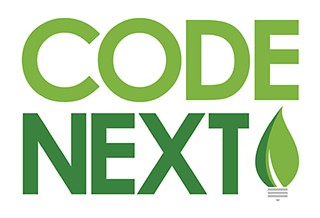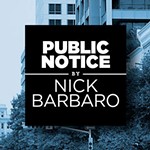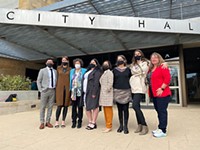CodeNEXT: Communication Is Key
CAG, staff present updates to Planning Commission
By Sarah Marloff, Fri., July 28, 2017
The theme of Tuesday's not-quite-joint meeting between the Planning Commission and Zoning & Platting Commission (which formally became an extension of the Planning Commission's standard biweekly meeting when not enough ZAP members showed up to produce a quorum) seemed to be communication. Between updates from CodeNEXT staffers and the CodeNEXT Advisory Group's briefing on their recommendations for the revised land development code, PC Chair Stephen Oliver was intent on stressing the importance of open lines between each group involved in the rewrite.
Several members of the (now disbanded) CAG provided a concise, insightful presentation to their 100-plus-page LDC recommendations report, which Eleanor McKinney wrapped by reminding commissioners: "We're all resources for you as you go through this over the next several months." The conversation then turned to the CAG's recommendations for handling the missing middle and affordable housing. CAG member Susan Moffat (who's married to Chronicle Publisher Nick Barbaro) reminded the group that CodeNEXT is not designed to give Austin the "affordable housing we so desperately need." In an effort to maintain existing family-friendly housing, she suggested using historical district designations to cover neighborhoods that have not yet been "gentrified out of existence." Moffat called on the city to provide resources to help neighborhoods with large populations of low-income families of color achieve these designations. Fellow member Steven Zettner addressed new housing options by confirming that the CAG struggled to offer missing middle solutions, and noted that one possible approach could be to change the developer density bonus rule from more affordable units in the same scale (as market rate units) to fewer units, but more bedrooms. Whether that solves family-friendly affordable housing, Zettner said, "We don't know."
CodeNEXT staff offered five updates to different, less-discussed sections of the rewrite including Subdivisions, Transportation, Environment, Landscape, and Process & Procedures. Oliver requested that each presenter include a short overview of the best practices studied while working on the updates, and suggested that these sections consider including images to help visualize "what we want and what we don't."
Version 2.0 of the code draft is expected in mid-September, and indications are that the Subdivisions section will be simplified while simultaneously adding definitions for clarity. (Transportation, for example, has been moved from the Subdivisions category into a new chapter called Street Layout.) City staffer Steve Hopkins said his Development Services department is considering removing variance requirements for Flag Lots (lots shaped like flags, or the letter P), which drew concern from Commissioner Karen McGraw.
Environmental updates will require developers to use water more effectively. Additionally, under the proposal, redevelopment projects will have to pay a fee-in-lieu to flood mitigation whether they're increasing impervious cover or not. A flood modeling should be available in August, and Commissioner Tom Nuckols said he was happy with the work done on that issue. "We're basically taking a bad situation and making it not as bad – or good," he said.
The commercial landscape code will expand and will now include "Functional Green," which requires some type of landscaping (living walls, green roofs, cisterns, etc.) to be added on dense sites like Downtown Mixed Use and Central Business Districts without parking lots. According to the update, the program manager is in the process of determining how much will be required; the Functional Green guide is expected to be released along with CodeNEXT version 3.0 sometime this fall.
Throughout the meeting, Oliver reminded presenters, CodeNEXT staff, and commissioners of the importance of working with all involved departments to make sure the proposed plans work in sync. He asked presenters to also reach out to commissioners with questions. "Staff wants draft two to be a partnership of effort, and that requires reaching out from all sides," he said. "We need questions asked of us, too, so we can be direct in our response."
Got something to say on the subject? Send a letter to the editor.











